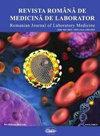慢性阻塞性肺病患者血清HMGB1水平的临床意义及与气流受限严重程度及免疫功能的相关性
IF 0.5
4区 医学
Q4 MEDICINE, RESEARCH & EXPERIMENTAL
引用次数: 0
摘要
摘要背景:探讨吸烟性慢性阻塞性肺疾病(COPD)患者血清HMGB1水平及其与气流限制和免疫功能的相关性。方法:将136例COPD患者分为轻、中、重度+极重度组。选取健康受试者35例作为对照组。采用ELISA法检测血清HMGB1水平,并分析其与肺功能、免疫功能指标的相关性。绘制受试者工作特征(ROC)曲线。结果:COPD患者PaO2、嗜酸性粒细胞计数、FEV1/FVC、FEV1% pred及IgA、IgM、IgG水平均低于对照组,且随气流受限加重而降低。COPD患者PaCO2、白细胞计数、中性粒细胞百分比、改良英国医学研究理事会(mMRC)量表及COPD评估试验(CAT)评分、d -二聚体(D-D)、PCT、CRP、HMGB1水平、髓样树突状细胞(mDC)、浆细胞样树突状细胞(pDC)计数、mDCs/pDCs均高于对照组,且随气流限制加重而升高(P<0.05)。COPD患者HMGB1水平与FEV1/FVC、FEV1% pred、IgA、IgM、IgG水平呈负相关,与mDC计数、pDC计数、mDC /pDCs呈正相关(P<0.0001)。ROC曲线下面积为0.883,最佳截止值为3.63 ng/mL,敏感性为86.7%,特异性为85.9%。结论:吸烟所致COPD患者血清HMGB1水平随气流受限加重而升高,且与肺功能和免疫功能下降有显著相关性,对COPD具有较高的预测价值。HMGB1是评估COPD进展的潜在生物标志物。本文章由计算机程序翻译,如有差异,请以英文原文为准。
Clinical significance of serum HMGB1 in COPD and correlation with severity of airflow restriction and immune function
Abstract Background: To explore the serum HMGB1 levels in patients with smoking-induced chronic obstructive pulmonary disease (COPD) and the correlations with airflow restriction and immune function. Methods: A total of 136 COPD patients were divided into mild, moderate and severe + extremely severe groups. Thirty-five healthy subjects were selected as control group. Serum HMGB1 levels were measured by ELISA, and the correlations with pulmonary and immune function indices were analyzed. Receiver operating characteristic (ROC) curve was plotted. Results: PaO2, eosinophil count, FEV1/FVC, FEV1% pred, and IgA, IgM, IgG levels of COPD patients were lower than those of control group, and decreased with airflow restriction aggravation. PaCO2, leukocyte count, neutrophil percentage, modified British Medical Research Council (mMRC) scale and COPD Assessment Test (CAT) scores, D-Dimer (D-D), PCT, CRP and HMGB1 levels, myeloid dendritic cell (mDC) and plasmacytoid dendritic cell (pDC) counts, and mDCs/pDCs of COPD patients exceeded those of control group, and increased with airflow restriction aggravation (P<0.05). HMGB1 levels of COPD patients were negatively correlated with FEV1/FVC, FEV1% pred, IgA, IgM and IgG levels and positively correlated with mDC count, pDC count and mDCs/pDCs (P<0.0001). The area under ROC curve was 0.883, the optimal cutoff value was 3.63 ng/mL, and sensitivity and specificity were 86.7% and 85.9%, respectively. Conclusions: Serum HMGB1 level in patients with smoking-induced COPD rises with airflow restriction aggravation and has significant correlations with the decline of pulmonary and immune functions, with high predictive value for COPD. HMGB1 is a potential biomarker for evaluating COPD progression.
求助全文
通过发布文献求助,成功后即可免费获取论文全文。
去求助
来源期刊

Revista Romana De Medicina De Laborator
MEDICINE, RESEARCH & EXPERIMENTAL-
CiteScore
0.31
自引率
20.00%
发文量
43
审稿时长
>12 weeks
期刊介绍:
The aim of the journal is to publish new information that would lead to a better understanding of biological mechanisms of production of human diseases, their prevention and diagnosis as early as possible and to monitor therapy and the development of the health of patients
 求助内容:
求助内容: 应助结果提醒方式:
应助结果提醒方式:


